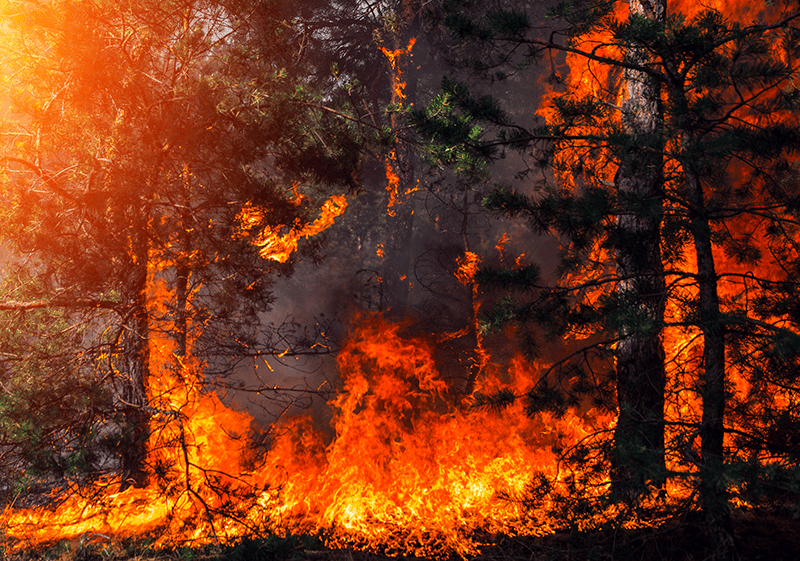

Improving Indoor Air Quality During Wildfire Smoke Events
Throughout the world, wildfires are becoming larger and more frequent. The effects of breathing wildfire smoke are of increasing concern to building owners and occupants. Even as I write this article from my office in Central Oregon, our skies are clouded with the smoke from nearby fires. Colleagues in adjacent states also feel the impact from fires in their backyard along with the smoke plumes that carry across state borders.
Understanding Wildfire Smoke
But what is wildfire smoke, and why is it harmful? Wildfire smoke is a complex mixture of carbon dioxide (CO2), water vapor, carbon monoxide (CO), hydrocarbons, other organic chemicals, nitrogen oxides (NOX), trace minerals, and particulate matter. While many of these components are known to have deleterious health effects, the particulate matter (PM) generated by wildfires can have a significant impact to the human body.
Particulate matter consists of solid particles and liquid droplets suspended in the air. Particles with diameters less than 10 microns (PM10) irritate the upper respiratory tract and eyes. But the smaller particles (PM2.5) cause the greatest health concern because they can be inhaled deep into the lungs and can affect respiratory and heart health.
Wildfire smoke can enter a building through the building openings in the form of natural ventilation and infiltration, and also through the HVAC mechanical ventilation systems. While we can either manually or electronically close the outside air intake of HVAC equipment, levels of carbon dioxide breathed out from the occupants can rise inside the building, negatively affecting the indoor air quality as noted in the1989 EPA Report to Congress which concluded that improved indoor air quality can result in higher productivity and fewer lost workdays.

Ventilation Methods
The American Society of Heating, Refrigerating, and Air-Conditioning Engineers (ASHRAE) has published a guide titled Planning Framework for Protecting Commercial Building Occupants from Smoke During Wildfire Events that covers planning and executing modifications to HVAC systems for a wildfire event.
Most buildings have mechanical ventilation systems that filter larger smoke particles from the airstream. Building operators can upgrade the mechanical system’s filters from the standard MERV 8 to at least MERV 13. My colleague’s blog covered this topic about ways to improve indoor air quality. Another consideration is to use MERV13 filters which incorporate carbon to help reduce odors.
In a nutshell, MERV 13 must capture 50% of the particles 0.3 – 1 µm. Buildings with larger HVAC systems, such as medical facilities, will probably already include air filters with a rating of MERV 13 or higher. Higher-rated MERV filters create an increased pressure drop through the HVAC system, and large air handler fans are built to overcome the increased pressure differential.
Smaller HVAC systems, such as ducted split systems using fan coil units or furnaces, have fans with limited static pressure capability and will need to be modified to be able to use MERV 13 filters without reducing airflow. For those systems, there are two solutions: one is to provide a designated filtered outdoor air system with a supply fan that can serve several furnaces or fan coil units. The other is to provide an ionizing outdoor air filter that agglomerates the small smoke particles together to form larger particles. The system’s standard MERV 8 filter can then capture the agglomerated particles.
Many homes and some commercial buildings do not have mechanical ventilation systems. Smoke that enters those buildings via natural ventilation and infiltration can be filtered with portable air cleaners. These devices recirculate room air while filtering it, and the better units have a pre-filter, carbon filter, and HEPA final filter. To be effective, they should be left running continuously during wildfire smoke events, and larger spaces may require more than one unit to be effective.
Where to Go for Help
As designers, building operators, and citizens, we need to protect ourselves from the harmful effects of wildfire smoke, which is becoming a more frequent and imposing issue. Some solutions are available, but they must be custom designed for each facility and user.
Contact us for more information